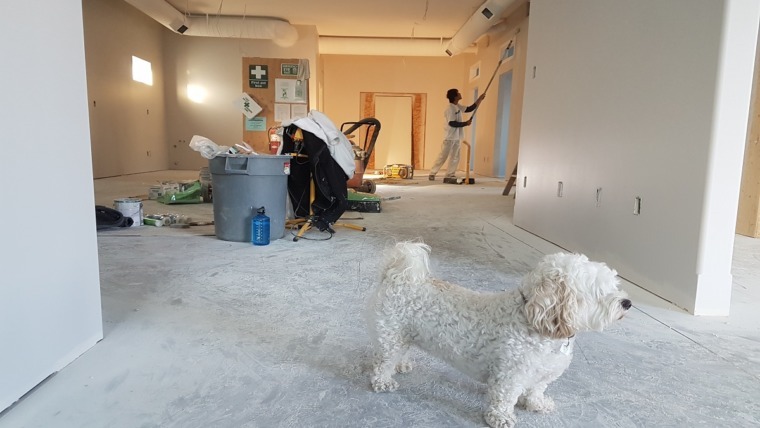
Finding Your Green Spark
Written by Diana Vicheva
Let’s face it, adjusting to an eco-friendly lifestyle is not as simple as you would like it to be. Especially when you’re settled in your ways, surrounded by tons of disposable goods that make everything easy – at least until you start thinking about long-term consequences.
Have you measured your personal ecology? The results could be quite sobering. But your motivation to make more sustainable choices doesn’t have to be driven by guilt and fear for the future. So, instead of being torn between unsustainable convenience and eco-anxiety, how about finding positive ways to ignite your green spark? There are plenty of small - but impactful - changes you can make to reduce your footprint and feel good about it.
Minimalism’s Benefits
My first encounter with minimalism involved influencers’ photos of almost empty rooms – a bed, a plant or two and a clothing rack with a couple of monochrome outfits. Too extreme, right? I remain unconvinced that people in the real world would be able to live like this and not feel completely miserable.
Yet, the minimalistic lifestyle helps the planet (reducing is the first R of the ‘Reduce, reuse, recycle’ trio for a reason) and could make you happy. It simply deserves a broader definition and should depend on the individual conscience. By taking a reasonable and realistic ‘Less is more approach and set your own rules, you could stop accumulating stuff you don’t need without striving to get rid of your possessions for the sake of it.
- Minimalism improves well-being and reduces stress levels. It gives you more time to spend doing what you love instead of cleaning and organising a cluttered home. Because, you know – the more stuff you own, the more energy and time you devote to them. Minimalism also brings a sense of control that comes with the simple question ‘Do I really need that?’ before every purchase. If you’re used to impulsing buys that you regret and discard later (often unpacked), you could give minimalism a try.
- It’s good for your budget. Applying the principles of minimalism to your purchasing habits eliminates unnecessary spending. The impact on your savings will be visible soon. As food and clothing are two of the worst offenders when it comes to both overspending and waste generation, you could use lists or apps to help you plan your shopping.
Timeless Wardrobe
Trends come and go, they are immaterial. The idea of timeless style is more tempting and sustainable. Once you know which style suits you best and fits your personality, you don’t have to experiment just because something new comes up. It pays off to stay within your comfort zone. I’ve been there - buying dresses that looked so pretty in the fitting room but never daring to wear them in public because on second thought they seemed too extravagant for me. As soon as I realised what was wrong with this picture, I stopped buying such outfits, donated the ones filling my wardrobe and returned to my own style.
- Say ‘no’ to fast fashion. It relies on fleeting trends and quantity over quality. Even worse, fast fashion is among the most polluting and unethical industries. And is it as cheap as it seems? No, because if you spend your money on a garment that looks so awful after a few wears that you’re forced to throw it away, you will end up disappointed and in need of a new one to replace it. Entering the vicious cycle of fast fashion leads to spending quite a lot in certain stores (small expenses add up over time and sometimes this escapes our notice) without having anything decent to wear. There are better, sustainable alternatives:
- Establish your style. In case you haven’t found it yet, instead of fast fashion, borrow from a friend or consider thrift shopping. To understand what really works for you, make sure you try out new style options outside the fitting room, in your usual environment. Once you discover it, you can create your own capsule wardrobe. Invest in a limited number of quality pieces that go well together and provide a variety of looks that make you feel beautiful and confident.
- Choose the right fabrics and take proper care of them, so they can last longer. Natural fibres – cotton, linen, hemp, wool and silk – and natural fibre combinations are not only great for the environment but also for your skin and your appearance. If you have the opportunity, support local fashion brands that use such fabrics and apply ethical practices. Treat your clothes with care. Wash them according to their specifics (temperature, detergent, etc.), avoid overwashing and leave them to air dry. If your clothes require maintenance and you aren’t able to fix them yourself, seek a tailor’s assistance instead of disposing of them.
Sharing Instead Of Wasting
Sharing experiences bring people closer and creates precious memories. When you have more than enough, you can share it. Travel is more interesting, food tastes better and life itself becomes more meaningful when shared.
Another gratifying experience? Giving. Clothes, household furniture and all kinds of items can receive a second chance with someone who would appreciate them. Some time ago, I was surprised to come across a plea for empty thin metal cups from old tea candles – a group of creative ladies needed them for an art project. So before you throw away something you no longer need, a quick search will tell you if it can be given a new purpose and you – the chance to help someone.
Small Steps Are Better Than Standing Still
Don’t be discouraged if you can’t fully commit to an eco-friendly lifestyle or your efforts seem pointless in the grand scheme of things. There is always more that can be done; what’s important is to keep going. Find your spark and remember what motivates you to live a green lifestyle.



